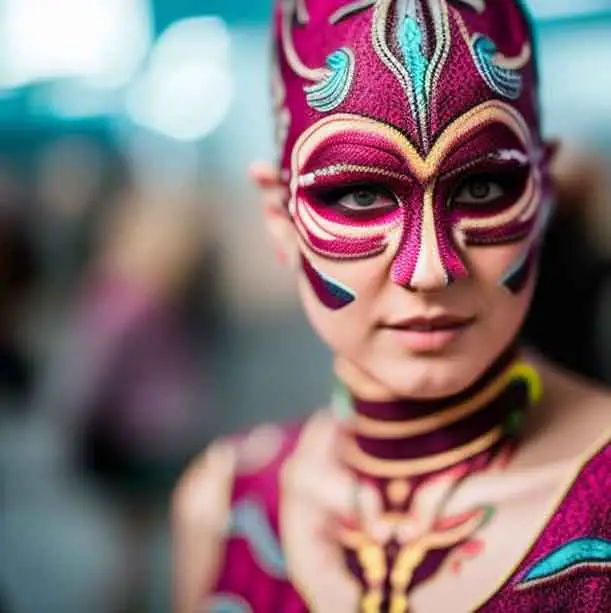Are you ready to take your cosplay game to the next level? Fabric paint can be your secret weapon to achieve incredible detail, texture, and authenticity in your costume creations. But how do you use fabric paint in cosplay like a pro? Fret not, we’ve got your back! In this extensive guide, we’ll take you on a journey through the world of fabric painting, covering various paint types, preparation techniques, application methods, expert tips, and FAQs to help you master this versatile and creative skill. So, let’s jump right in!
Part 1: The Basics of Fabric Paint
Before you can paint your way to cosplay success, it’s important to understand the different types of fabric paint available and their unique characteristics.
Types of Fabric Paint
1. Acrylic-based Fabric Paint
- Quick-drying and generally waterproof
- Suitable for various surfaces, including fabric, leather, and canvas
- Available in a wide range of colors and finishes
- Can be mixed with fabric medium to improve flexibility and durability
2. Fabric Spray Paint
- Ideal for covering large areas or creating gradients and ombre effects
- Fast and easy application with a spray nozzle
- Available in both permanent and temporary formulas
3. 3D Fabric Paint
- Perfect for adding texture, dimension, and raised details to your cosplay costume
- Dries with a three-dimensional finish, making it ideal for intricate designs and patterns
- Available in a variety of colors, finishes, and applicator tips
Part 2: Prepping Your Fabric for Success
To ensure the best possible results with fabric paint, it’s essential to prepare your fabric properly.
Steps to Prepare Your Fabric
- Wash the fabric: Clean your fabric to remove any dirt, dust, or starch that could interfere with paint adhesion.
- Iron the fabric: Smooth out any wrinkles or creases that might affect the paint application.
- Test the paint: Apply a small amount of paint to a scrap piece of fabric to check for color, consistency, and compatibility.

Part 3: Mastering Fabric Painting Techniques
Now that you have a solid foundation in fabric paint types and preparation, it’s time to explore various techniques for applying fabric paint to your cosplay costume.
Stenciling: Achieving Precision and Consistency
Stenciling is a fantastic way to achieve clean, crisp designs on your cosplay costume.
Steps for Stenciling
- Create or purchase a stencil: Choose a design that complements your cosplay character and either create a stencil using a cutting machine or purchase a premade one.
- Secure the stencil: Attach the stencil to your fabric using painter’s tape or stencil adhesive to prevent shifting during painting.
- Apply the fabric paint: Use a brush, sponge, or roller to apply paint over the stencil, taking care not to use too much paint to avoid bleeding.
- Remove the stencil: Carefully lift the stencil off the fabric and allow the paint to dry completely.
Hand-painting: Unleashing Your Creativity

Hand-painting allows you to create intricate designs and add personal touches to your cosplay costume.
Tips for Hand-painting
- Use a fine brush: Select a brush with fine bristles for better precision and control.
- Work slowly: Take your time to carefully paint your design, using a reference image to ensure accuracy and consistency.
- Layer your paint: Start with lighter colors and gradually build up to darker shades, allowing each layer to dry before adding the next one.
Sponging: Creating Textures and Patterns
Sponging is an excellent technique for adding texture, depth, and organic patterns to your cosplay costume.
Steps for Sponging
- Cut a sponge: Choose a sponge with the desired texture and cut it into the desired shape.
- Dip the sponge into paint: Load the sponge with fabric paint, then dab off the excess on a piece of scrap paper or cloth.
- Apply the paint: Gently dab the sponge onto the fabric, varying the pressure and angle to create different effects.
Part 4: Expert Tips for Fabric Painting Success
To make your fabric painting experience as smooth and successful as possible, follow these expert tips:
- Use fabric medium: Combine fabric medium with acrylic paint to make it more flexible and suitable for use on fabric.
- Practice on scrap fabric: Before applying paint to your cosplay costume, practice your technique on a similar type of fabric.
- Allow paint to dry: Let the paint dry completely before handling or wearing the costume to prevent smudging or damage.
- Use the right tools: Choose brushes, sponges, and other tools that are appropriate for the technique you’re using.
Part 5: FAQs – Your Fabric Painting Questions Answered
Q: Can I use fabric paint on any type of fabric?
A: Most fabric paints are designed to work well on a variety of materials. However, always check the paint’s label for compatibility and perform a patch test if you’re unsure.
Q: How do I set the fabric paint to make it permanent?
A: Most fabric paints require heat-setting using an iron or a tumble dryer. Follow the manufacturer’s instructions for the specific paint you’re using to ensure proper setting.
Q: Can I wash my fabric-painted cosplay costume?
A: Yes, but be sure to follow the care instructions provided by the paint manufacturer. Generally, it’s best to hand-wash the garment inside out with cold water and mild detergent, then air-dry it.
Q: How long does fabric paint take to dry?
A: Drying times can vary depending on the type of paint, fabric, and thickness of the application. Generally, it takes around 2-4 hours for the paint to dry to the touch and up to 24 hours for a complete cure.
Q: Can I mix fabric paints to create custom colors?
A: Yes, just like regular paint, you can mix fabric paints to create unique shades and hues for your cosplay costume.
Conclusion
Mastering how to use fabric paint in cosplay can unlock endless possibilities for creating stunning and authentic costumes that stand out from the crowd. With various techniques like stenciling, hand-painting, and sponging at your disposal, you can add intricate details, textures, and patterns that bring your characters to life.
Remember to start with the right type of fabric paint, prepare your fabric, and practice your techniques on scrap material before diving into your actual costume. Keep our expert tips and FAQs in mind whenever you need guidance or inspiration. With patience and practice, you’ll become a fabric painting master, ready to impress everyone at your next cosplay event!





